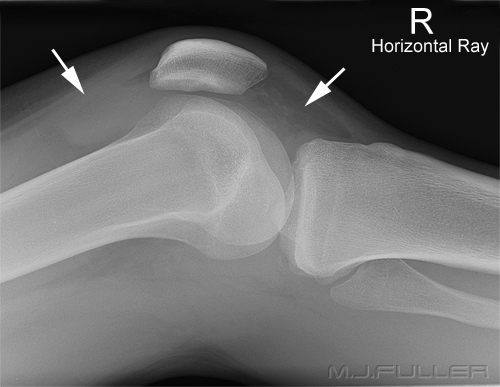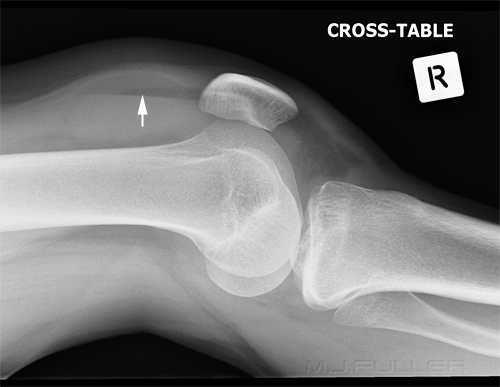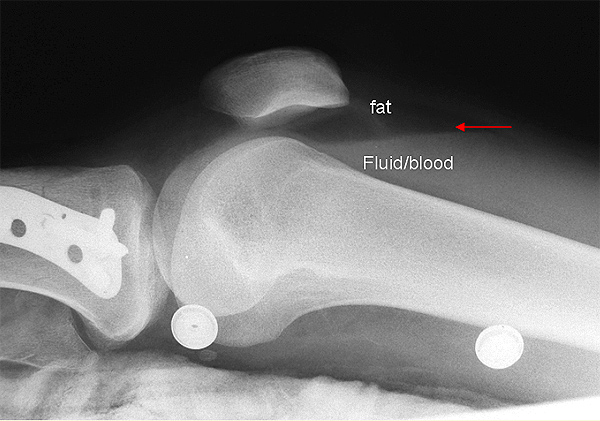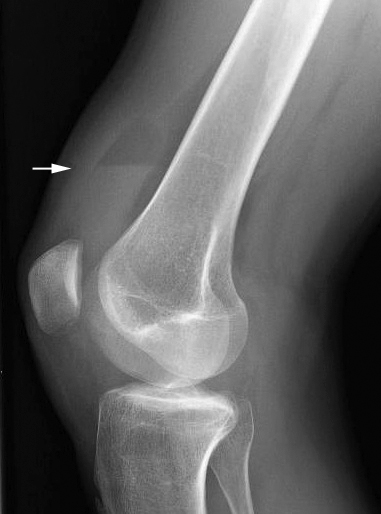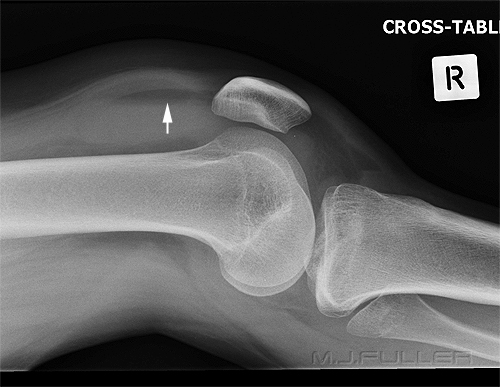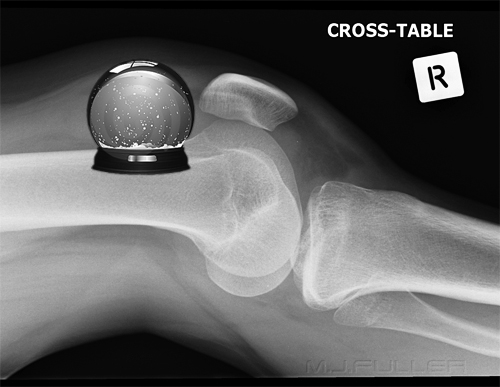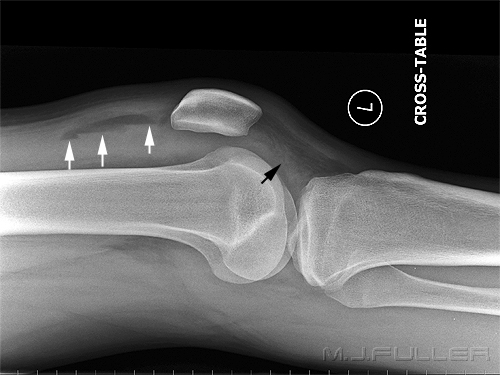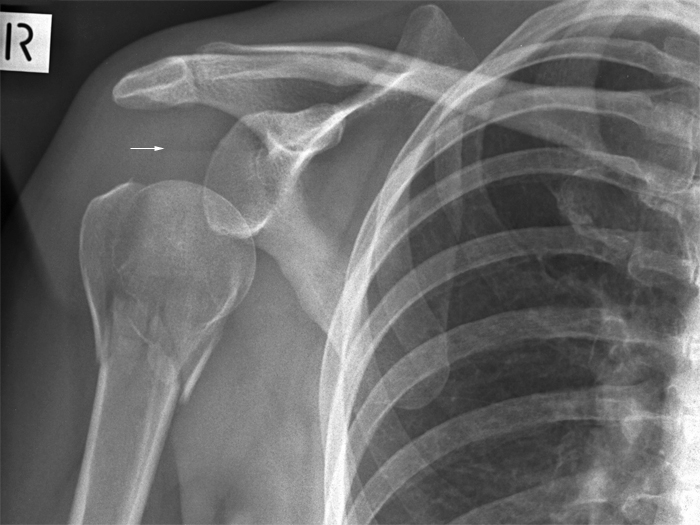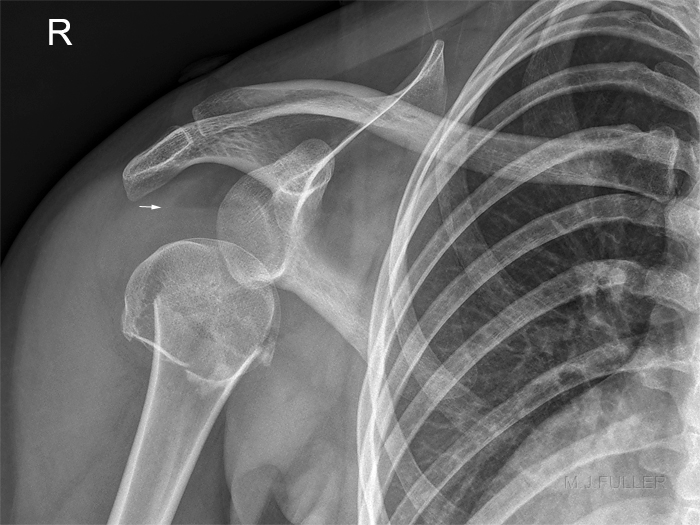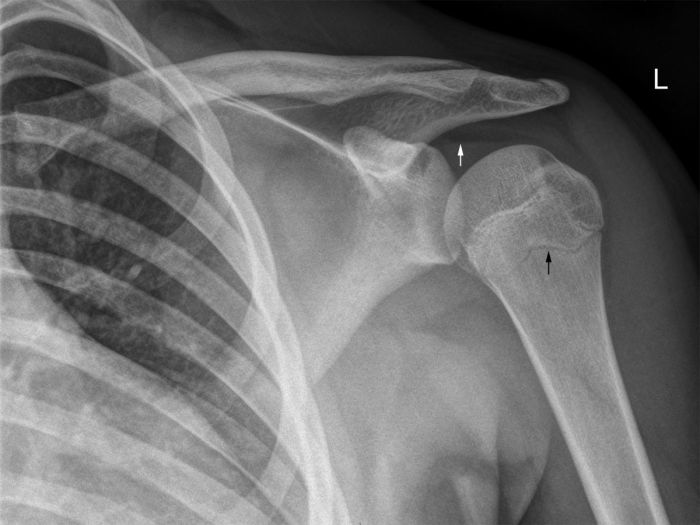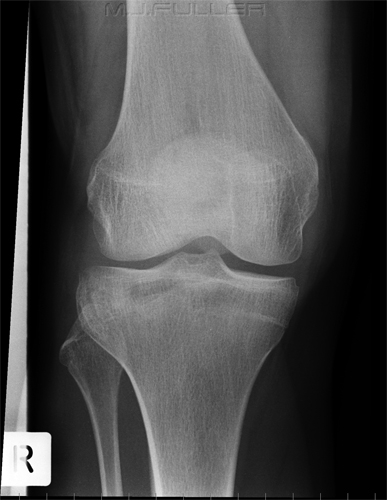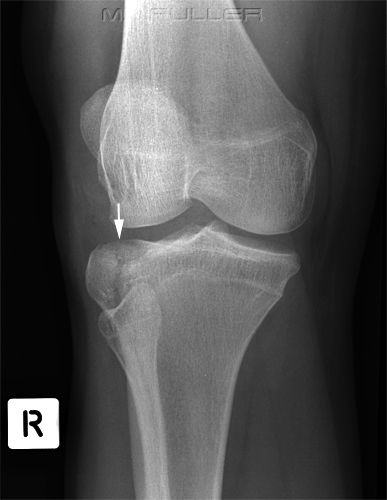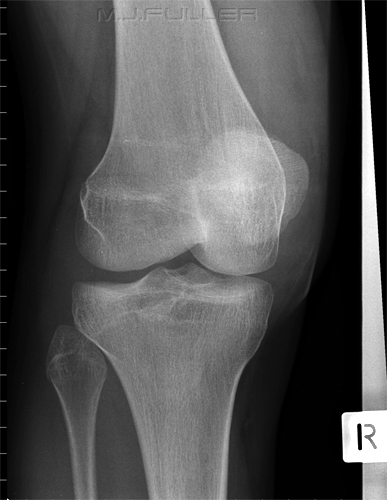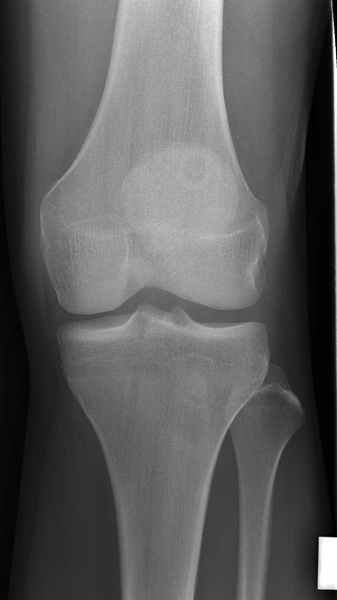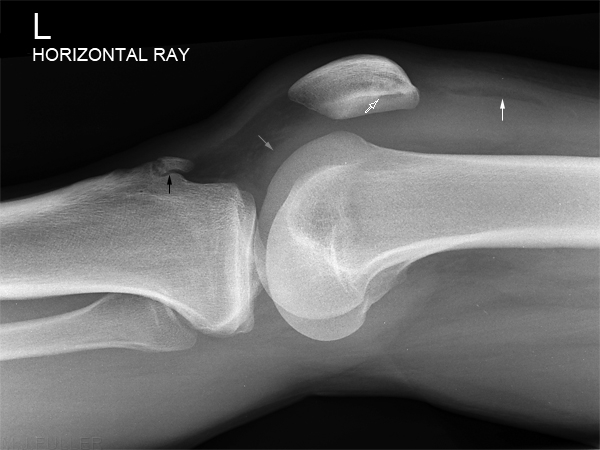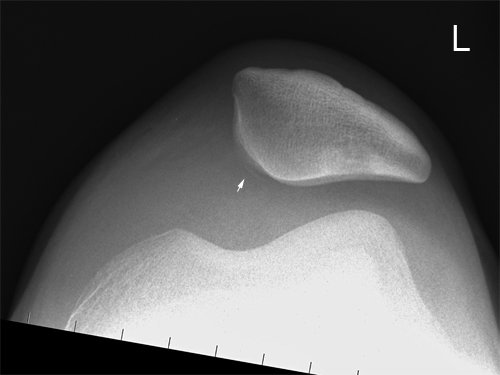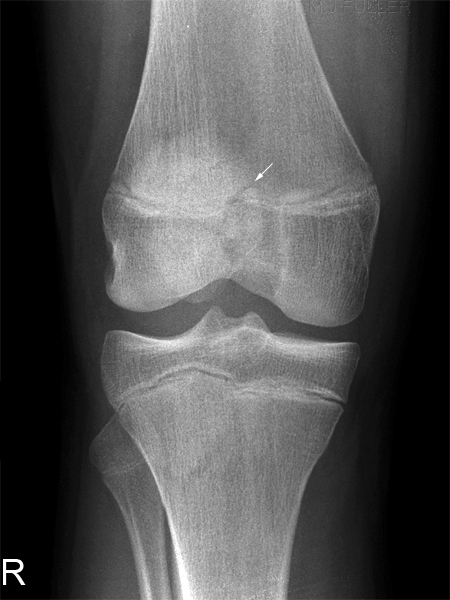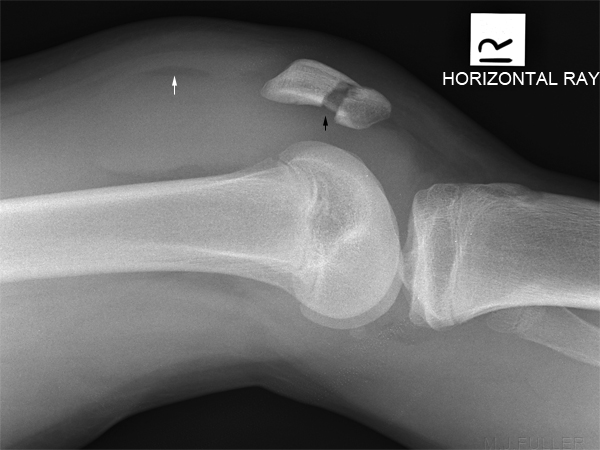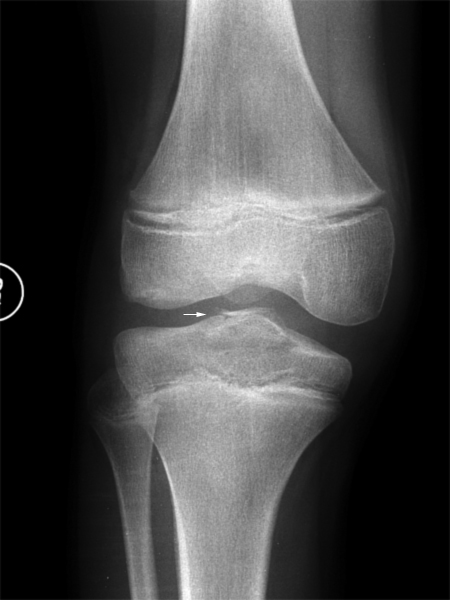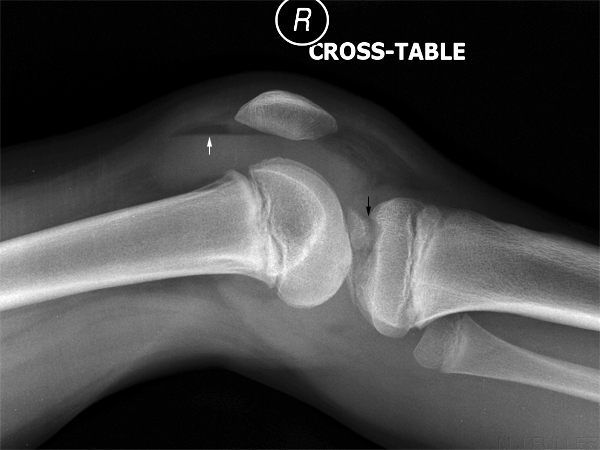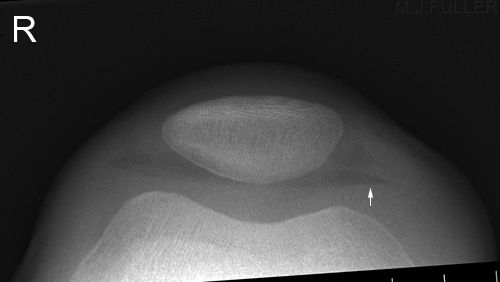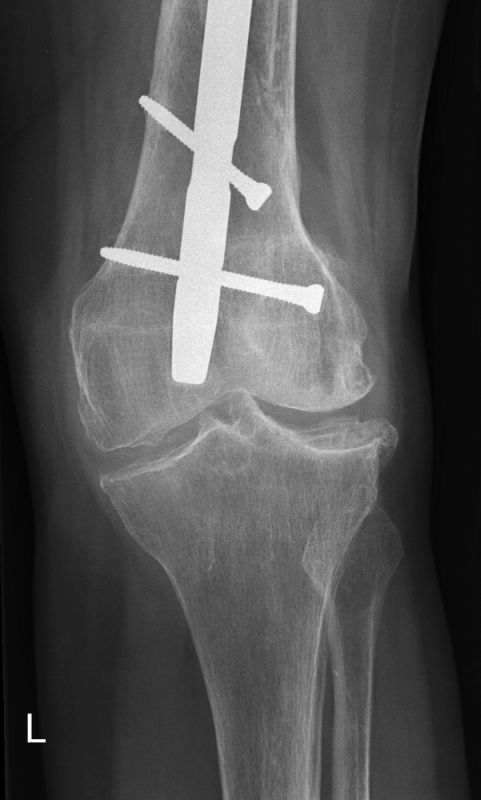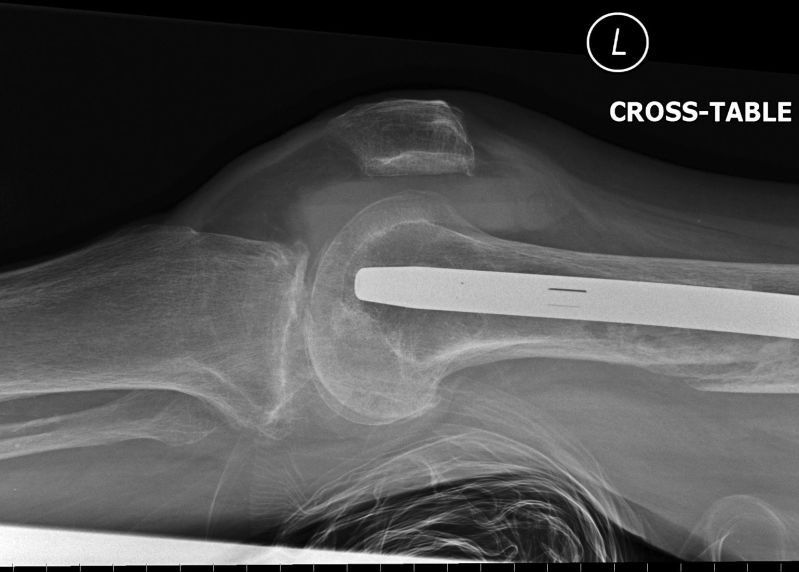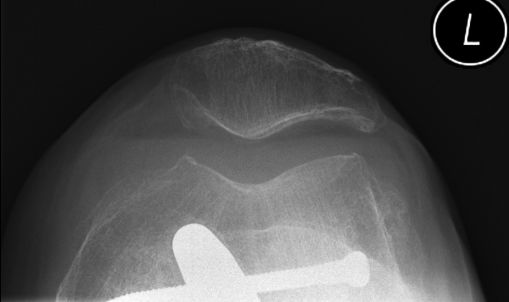Lipohaemarthrosis
Introduction
Lipohaemarthrosis is a soft tissue sign that indicates the presence of an articular fracture. This page considers all aspects of imaging a lipohaemarthrosis.
Definition
RadiographyA lipohaemarthrosis refers to a joint fluid accumulation that is composed of both blood and fat (lipo- fat, haem- blood, throsis- joint)
Plain film demonstration of Lipohaemarthrosis requires a suitable exposure and a horizontal X-ray beam. Failure to employ a horizontal beam technique will either fail to demonstrate the abnormality or will suggest a joint effusion rather than a lipohaemarthrosis. The radiographer has a responsibility to check images carefully for the presence of a lipohaemarthrosis- this is particularly important when performing knee radiography in trauma patients.
Knee Effusion or Lipohaemarthrosis
The patient fell out of a tree onto both feet. There is a knee joint effusion. This is evident from the fluid density seen in the supra-patella pouch (left arrow) and in Hoffa's fat pad (right arrow). A knee effusion indicates an intra-capsular injury (but not necessarily a fracture). A knee effusion is not particularly specific or diagnostic, but the absence of a knee effusion can be useful in cases of equivocal fracture. This patient has a lipohaemarthrosis. The fat floats on the blood forming a sharply defined blood-fat interface.
Knee Lipohaemarthrosis
A lipohaemarthrosis refers to the presence of a blood and fat in a joint (i.e. lipo= fat, haemo = blood, throsis= pertaining to a joint). The lateral horizontal ray knee view is the one knee projection where we see this appearance. A knee lipohaemarthrosis indicates that there is a fracture that communicates with the knee joint. The blood and fat are both associated with the fracture. The fat has entered the joint from the bone medulla via the fracture. The fat 'floats' on the blood resulting in a visible interface (red arrow).
It has been suggested that a patella fracture cannot cause a lipohaemarthrosis because there is insufficient fat within the patella. MR imaging of the patella (fat sat) demonstrates fat in the patella. I have seen lipohaemarthrosis associated with fractured patella on many occasions and not demonstrated any other bony injury. I am increasingly convinced that a fractured patella can result in lipohaemarthrosis of the knee which is visible on the horizontal ray lateral image.
<a class="external" href="http://www.gentili.net/FBI/knee_-_lateral_radiograph.htm" rel="nofollow" target="_blank">http://www.gentili.net/FBI/knee_-_lateral_radiograph.htm</a>This is an erect lateral knee. A lipohaemarthrosis is demonstrated. This is a potentially useful view for subtle lipohaemarthrosis because there is no superimposed quadriceps tendon. Its usefulness is limited by the likelihood that a patient with a knee fracture will not mobilise readily.
The Snow Globe Effect
adapted from <a class="external" href="http://thumbs.dreamstime.com/thumb_297/1218067161tWnq3P.jpg" rel="nofollow" target="_blank">http://thumbs.dreamstime.com/thumb_297/1218067161tWnq3P.jpg</a>I have observed with some patients that the initial plain film image of a lipohaemarthrosis of the knee can demonstrate an indistinct fat-blood interface. One of my colleagues suggested that this could be due to the mixing of blood and fat associated with movement of the patient onto the X-ray table (or movement of the gurney/trolley/barouche/stretcher to the X-ray department). If this theory was to hold weight, the fat/fluid interface should become sharper if the image is repeated while the patient is stationary (see below)
Note also a short fat/fluid interface above the tibial tuberosity.This is the same patient in the same position several minutes later. The fat/blood interface is now sharply defined (arrowed).
<a class="external" href="http://upload.wikimedia.org/wikipedia/commons/a/ab/Snow_Globe_girl.jpg" rel="nofollow" target="_blank">http://upload.wikimedia.org/wikipedia/commons/a/ab/Snow_Globe_girl.jpg</a>A snow globe is the toy (often a souvenir) that you shake to produce an effect like falling snow.
Multi-level Lipohaemarthrosis
Lipohaemarthrosis of the Shoulder Joint
There is a lipohaemarthrosis of the knee joint. There appears to be three fat-blood levels in a stepped pattern (white arrows). This may reflect some degree of normal compartmentalism of the suprapatellar space.
Case Study 1
Case Study 2
Case 3
Case 4
Case 5
References
1. Weissman, B and Sledge, C. Orthopedic Radiology. Saunders and Company, 1986
2. Hall FM. Radiographic diagnosis and accuracy in knee joint effusions.
Radiology 1975;1 15:49-54
... back to the Applied Radiography home page
